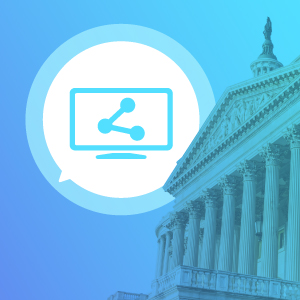Carahsoft recently hosted the 11th Annual Government Customer Experience & Engagement Seminar. The virtual seminar discussed how agencies can transform customer experience (CX) and satisfaction and increase constituent engagement across federal, state, and local government agencies.
Digital services became vital during the pandemic as many in-person services weren’t available or were limited; however, many people needed more help from the government during this time. This combination of factors acted as a catalyst for agencies to modernize their digital infrastructure.
Agency leaders started investing in things like revamping customer relationship management software, deploying chatbots to handle volume, providing digital signatures and fillable forms, and ensuring websites are easy to use. Forward-thinking agencies have taken advantage of these challenges to revamp their websites into becoming their digital front door.
Starting Website Redesign
Many agencies struggle to know where to start with a website redesign. Some experts recommend starting with your ideal end result. What do you want the constituent to walk away with viscerally and emotionally? What could make them say “That was an amazing site.” What is meaningful to them that they’re excited about? In addition, agencies should look for great tools that are robust, scalable, secure, and flexible. Find great partners with experience in delivering on time and within budget—and who will bring new ideas to your site.
The 21st Century Integrated Digital Experiences Act (IDEA) mandates the modernization of federal websites and digital services. It also showcases the value of human centered design, demonstrating how agencies should be innovating around the people that they intend to serve.
The US Web Design System has a great toolkit for agencies to get started, whether a federal or state and local agency, providing components to redesign parts of a website. The toolkits offer a maturity model so teams can evaluate the maturity of their design practice, including skills, processes, and outcomes. By providing ready-made templates, the site also saves agencies money and time.
 Prioritizing User Experience
Prioritizing User Experience
Being user centered should be the #1 priority for any redesign. It means that digital experiences are designed around users’ needs—as determined by data driven analysis. Agencies need to use both qualitative (understanding behaviors and motivations) and quantitative data as evidence for design decisions. They should take the time to research what’s happening with their customers and understand what they need.
Searchability is a close second priority. It doesn’t matter if the content is authoritative, mobile friendly, or customizable if no one can find it. Agencies need to tag content with conceptual keywords, learn from behaviors, and measure how well search results are working. This can help organizations better adjust search results. Organizations should also ensure that content shows up in search engines, which requires a concerted content strategy effort.
Mobile Delivery of Services
The pandemic led to a shift in the way constituents use websites. In 2019, one agency’s desktop usage was 40% and mobile was 60%. During the pandemic the opposite happened, with desktop usage at 60% and mobile at 40%. However, many agencies still prioritize mobile-friendly designs because the people who most need government services frequently don’t have access to a computer; however most do have phones.
Pierce County, NC set up a contactless process to distribute funds from the Emergency Rental Assistance Program. Their process has a chatbot on the front end to prequalify visitors by asking a series of questions. If they do prequalify, it sends them to a form. This saves constituents’ time and reduces the social workers’ workload.
Making Effective Use of Analytics
In order to create a good customer experience, agencies must be constantly aligning, learning, designing, and testing. They need feedback from their constituents and analytics to understand the usage patterns.
Robust analytics tools can move beyond simple traffic statistics to determining the customer journey: what people are seeking, how easily they’re finding it, and heat maps showing where they spend the most time.
One way to capture information for analytics is through fillable forms. Even when you digitize a PDF, you’re not capturing the data in a digitally native format. However, an html form— such as the one in TurboTax—walks someone through intuitive interviews and pre-populates with the information the system already has about the person. It captures data electronically, requiring no re-entry of information and creating no errors.
One experience with implementing the Affordable Care Act illustrates the importance of analytics. When they implemented analytics on the sign-up site, they found that a million and a half users started the process and then abandoned the form. The analytics application showed that many of the missing users were using an older form of a particular browser—which wasn’t processing the data correctly and dropping people from the website. With such information, they could salvage that environment, making it stable in two days and solving 98% of the core issues within a week.
View our session to learn more from industry speakers discussing the future of governments’ digital transformation, customer experience, constituent engagement, and service delivery initiatives.







